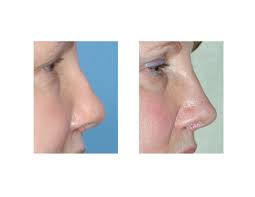Rhinoplasty is a well known aesthetic facial procedure that has a not insignificant risk of revision. Because the nose occupies the central area of the face, it understandably undergoes a lot of scrutiny, particularly after reshaping. When combined with the complex anatomy of the nose and the variability in how it can heal and contract, it is no surprise that the outcomes of rhinoplasty is not always predictable. Numerous websites such as Real Self rate the satisfaction rate at just less than 66% which is very low compared to such procedures as breast augmentation and tummy tucks.

In an interesting study published in the September 2012 issue of Plastic and Reconstructive Surgery, the question of what motivates someone to undergo secondary rhinoplasty was investigated. Written by an authority in rhinoplasty surgery, 150 consecutive patients (121 women and 29 men) who underwent secondary rhinoplasty were studied. The average number of prior operations was 3.6. The most common reason (41%) patients underwent secondary rhinoplasty was that a new deformity appeared after the primary surgery. Other reasons included lack of improvement of the original problem (33%), loss of a prior identifiable personal or ethnic appearance (15%), a good result that one wanted to try and even make better (10%) and a persistent or new airway obstruction problem. (1%) The satisfaction rate with secondary rhinoplasty was 97% in this patient group.
There is an understandable fear and hesitancy to operate on unhappy rhinoplasty patients. Besides the fact that the new surgeon did not cause the patient’s problem there is the perception that they can not be satisfied. This suggests that ‘past history predicts future behavior’. This study shows that this is not true. One of the most common reasons patients want secondary rhinoplasty is that they developed a problem that they initially did not have. This will understandably make a patient cautious and very questioning. At the least they will take a lot more time to counsel before and after surgery and this is reflected in the 14% who were demanding of surgeon and staff time.
This study must be viewed from the perspective that the secondary/revisional rhinoplasties were done by a master surgeon and incredibly all through the endonasal approach. These results are impressive but are reflective as much as to the skill of the author surgeon than it is to the nature of revisional rhinoplasty surgery.
Dr. Barry Eppley
Indianapolis, Indiana


